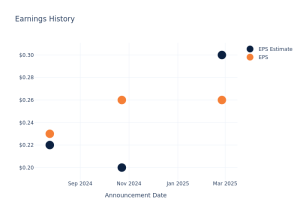
A sharp rise in September retail sales is sparking fresh debate among economists about the Federal Reserve’s next move, as stronger-than-expected consumer resilience raises doubts about the need for further interest rate cuts.
Retail sales rose 0.4% month-over-month in the last month of the quarter, far exceeding the 0.1% growth recorded in August and surpassing economists’ forecasts of 0.3%. Even more notably, excluding volatile sectors like autos and gasoline, sales surged by 0.7%, marking the second-largest increase over the past 12 months.
The stronger-than-expected sales report is pushing analysts to rethink whether the Federal Reserve will move forward with another interest rate cut in November. While market participants overwhelmingly anticipate a 25 basis point reduction following the 50-basis-point move last month, the latest economic data may complicate that outlook.
Economists Debate On Fed Interest Rates
Quincy Krosby, chief global strategist at LPL Financial, said, “Retail sales came in well above expectations and continue to defy the weak economy thesis.”
Krosby added that the key question for monetary policy is whether the Fed will be concerned that the economy’s renewed strength could drive inflation higher.
However, she expects that a 25-basis-point cut will occur, especially if hurricane damage significantly impacts the labor market.
Speaking to CNBC, Stifel chief economist Lindsey Piegza said, “I think this was a very strong number and underscores the notion that the Fed maybe took too big of a step out of the gate with that 50 basis point cut.” Looking ahead, Piegza explained that there’s a stronger argument for a more patient approach, potentially holding off on a November cut.
Kathy Bostjancic, chief economist at Nationwide, also commented on the retail data: “That’s positive, right, for the overall economy. It’s really big consumer spending buoying the overall GDP growth in the US.”
Regarding the next Fed moves, Bostjancic added that “it’s not a slam dunk that they will cut rates.”
LPL Financial’s chief economist Jeffrey Roach maintains that the Fed will proceed with gradual cuts.
“Strong consumer spending in September suggests economic growth in the previous quarter was solidly above trend. Looking ahead, investors need to monitor any signs that the unemployed are finding it more difficult to earn a paycheck. Our baseline remains that the Fed will likely cut a quarter of a percent in both November and December.” Roach said.
Investors still largely anticipate a cut at the upcoming Fed meeting. Market-implied odds of a 25-basis-point rate cut in November dipped only slightly from 94% to 87% on Thursday.
Market Reactions: Treasury Yields Rise, Gold Hits Record Highs
Stronger-than-expected retail sales data, combined with a drop in unemployment claims, sparked a sharp rise in Treasury yields on Thursday, putting the brakes on further stock market gains.
The yield on the 10-year Treasury jumped 8 basis points to 4.10%, while the 30-year yield surged 9 basis points to 4.39%. This spike in yields hit Treasury-related assets hard, with the iShares 20+ Year Treasury Bond ETF TLT tumbling 1.5%. The surge in Treasury yields weighed on investor risk sentiment.
After opening 0.6% higher to fresh record highs, the S&P 500 was up just 0.3% by 12:15 p.m. in New York. The tech-heavy Nasdaq 100, tracked by the Invesco QQQ Trust QQQ, which had risen over 1% at the open, was up 0.7% at the time of publication.
Meanwhile, gold prices, as tracked by the SPDR Gold Trust GLD, rose 0.7%, hitting new all-time highs.
Read Next:
Image created using artificial intelligence via Midjourney.
Market News and Data brought to you by Benzinga APIs
© 2024 Benzinga.com. Benzinga does not provide investment advice. All rights reserved.
